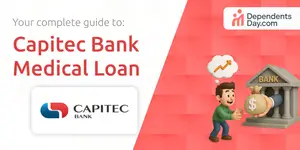
Building a solid credit foundation when your score is in the fair range can transform your financial future. With strategic card choices and disciplined habits, you can unlock better rates, rewards, and premium products.
Fair credit typically falls between 580 and 669 on the FICO scale. This range signals to lenders that you have some credit experience but may have had past challenges. By focusing on improvement, you can advance to good or excellent tiers, securing stronger borrowing power and reduced interest rates.
Recovering from setbacks or starting fresh requires commitment. With the right cards and habits, even consumers with limited history can demonstrate reliability and timely payments are crucial to their credit reports.
Your FICO score is determined by several weighted factors. Understanding these allows you to target areas for improvement:
VantageScore follows similar weights but may score new accounts more quickly, considering multiple inquiries as one within two weeks.
Strengthening a fair credit score demands consistency and strategy. Follow these proven steps:
Over time, you will see gradual improvements as long as you remain patient and disciplined.
Choosing between secured and unsecured options depends on your history and deposit capacity. Secured cards require a refundable deposit, typically equal to your credit limit. This minimizes risk for issuers and eases approval.
Unsecured cards often carry higher fees or stricter requirements but offer immediate rewards and no deposit. Some issuers review your account after a year and may upgrade you to an unsecured line, returning your deposit.
Both card types can report to all three major bureaus. Look for options that offer reports to all three bureaus and clear paths to higher limits.
Below is a comprehensive overview of leading cards for July 2025, ideal for consumers with fair credit.
This table highlights a mix of secured and unsecured cards to meet various needs and budgets.
Students and entrepreneurs have tailored options such as student cards or small-business secured lines. For those with no history or very poor scores, no-credit-check cards like OpenSky and Current Build provide immediate approval without a hard inquiry.
These cards focus on no credit history required or minimal underwriting to help you begin reporting positive activity right away. Once established, you can transition to cards with richer rewards.
FICO requires six months of activity to generate a score, while VantageScore may appear even faster. Significant improvements often take three to six months of disciplined use. Mark your calendar to review changes quarterly and adjust your approach if progress stalls.
Long-term success depends on consistent habits and strategic planning. Start by confirming your current score and monitoring it regularly. Use cards that automatic upgrade opportunities each year and report to multiple bureaus. Avoid applying for too many cards at once and steadily increase your credit limits where possible.
Over time, your growing score will qualify you for lower-interest loans, premium rewards cards, and even mortgages. Celebrate milestones—reaching a 700 score, reducing utilization below 20 percent—and set new targets to stay motivated.
By following these guidelines and choosing cards suited to fair credit, you’ll transform your financial outlook and open doors to greater opportunities.
References













